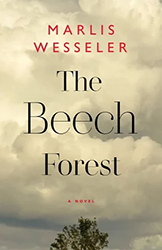The opening pages of Thank You, Dr. Salk! introduce young readers to an era when the polio virus routinely sickened and disabled children and some adults. Dean Robbins’ words and Mike Dutton’s illustrations dramatize this ongoing threat, when those stricken by the illness, if they survived, were left struggling “On canes. On crutches. In wheelchairs.” This grateful biography of pioneering scientist Jonas Salk reinforces several important messages, one of which is that vaccines save lives. Intellectually gifted and determined individuals like Dr. Salk can make the world a safer place through developing technologies targeted at solving seemingly intractable problems. Robbins and Dutton also emphasize that ethical values that underlie scientific progress.
Coping strategies for life during a polio epidemic were of limited success. Social distancing, especially avoiding beaches and parks during summer when outbreaks were most common, made life even more miserable. Dutton depicts a girl and her mother; the girl looks frightened and her mother averts her eyes, appearing defeated. Then the young Jonas Salk appears, a confident child superhero in big glasses, with hands assertively on his hips. In response to the question of who would stop this scourge, Robbins assures readers that “He would stop it!” While the description of Salk as a lone genius might seem simplistic, the author places the boy’s commitment to solve problems as the core Jewish value of tikkun olam, repairing the world. Dutton’s series of pictures portray Salk first as a child, later a college student and medical student, and, in 1947, as a vaccine researcher. The same oversized glasses appear on his maturing form, pointing out that the adult scientist still has the curiosity of the inquisitive child.
Specific elements of Salk’s polio research involve combining three different types of the virus in one vaccine. Robbins accurately, if briefly, presents the risks of experimentation and notes that Salk himself, as well as his wife and sons, volunteered to participate in the trials. He also conveys the tremendous excitement at Salk’s progress, as well as the global nature of polio pandemics and the necessity of reaching people all over the world. Bright colors and geometric forms characterize Dutton’s pictures, with people of different races and ages celebrating. City streets filled with neighborhood shops specifically named, such as “Oxford Bakery,” and “CR Saul Groceries Meats,” give a touch of realism to a story about broad themes of hope and progress. The volume of letters that Salk received is visualized as a curving line of small figures, each an individual whose life had been measurably improved by the introduction of an effective vaccine against polio. The information that “One letter was two hundred feet long and signed by an entire town!” allows children to grasp the magnitude of Salk’s contribution.
Jonas Salk was a brilliant and dedicated scientist. His dedication to world-changing research may have been less influenced by specific religious teaching than by the working-class Jewish values of his parents, for whom education was the key to success in America. Nonetheless, it is important to identify Salk’s Jewish roots, given that study, individual effort, and belonging to a community were formative to his accomplishments. His life story will introduce readers to a distant era and a past pandemic; they will easily recognize its relevance to the world today. Salk’s courage and brilliance may have been exceptional, but his life story offers hope for the future.
Thank You, Dr. Salk! is a highly recommended biography which includes an author’s note with historical background information, an explanation of “How a Vaccine Fights a Virus,” a timeline, and a list of resources.
Emily Schneider writes about literature, feminism, and culture for Tablet, The Forward, The Horn Book, and other publications, and writes about children’s books on her blog. She has a Ph.D. in Romance Languages and Literatures.





